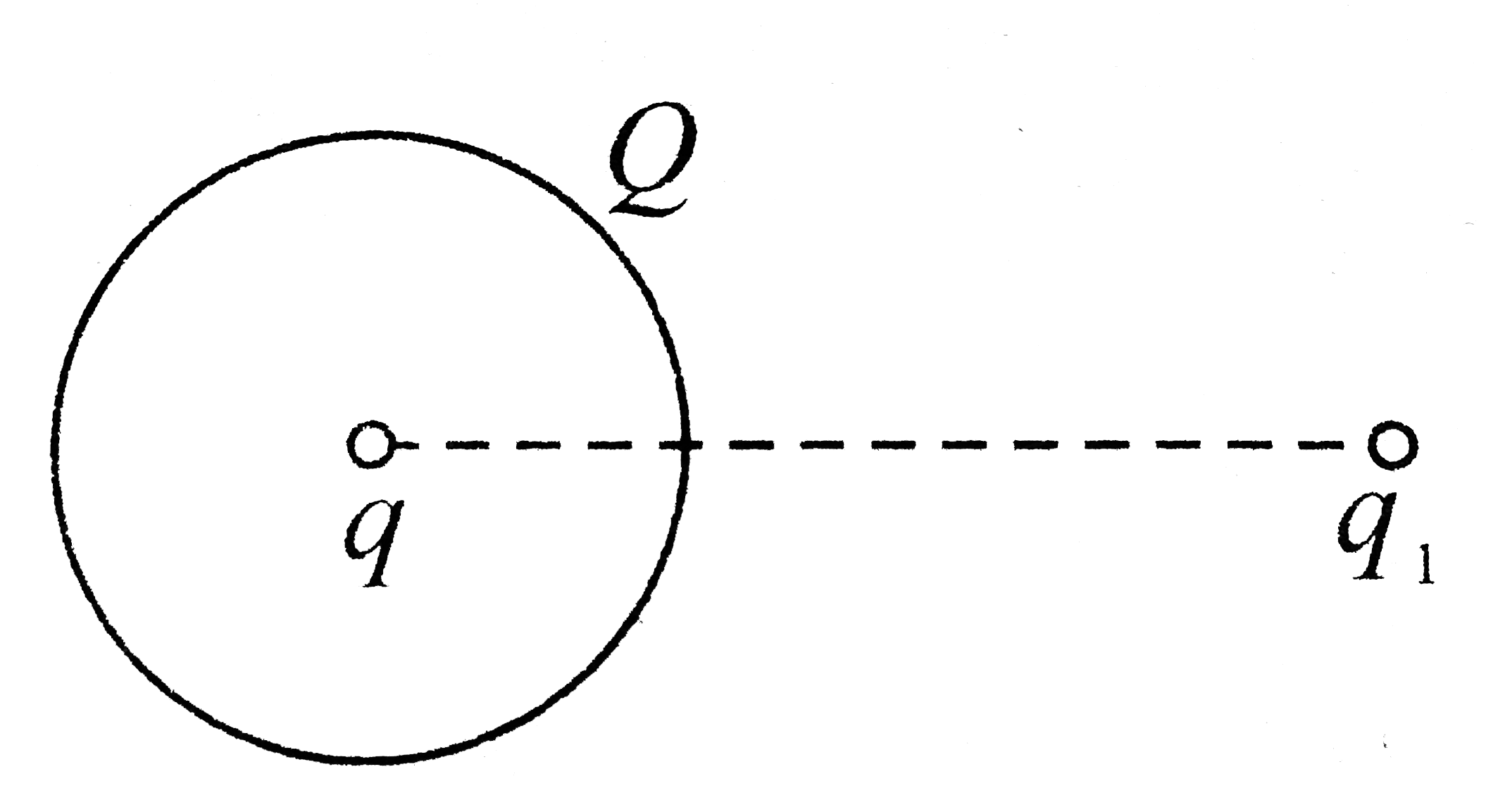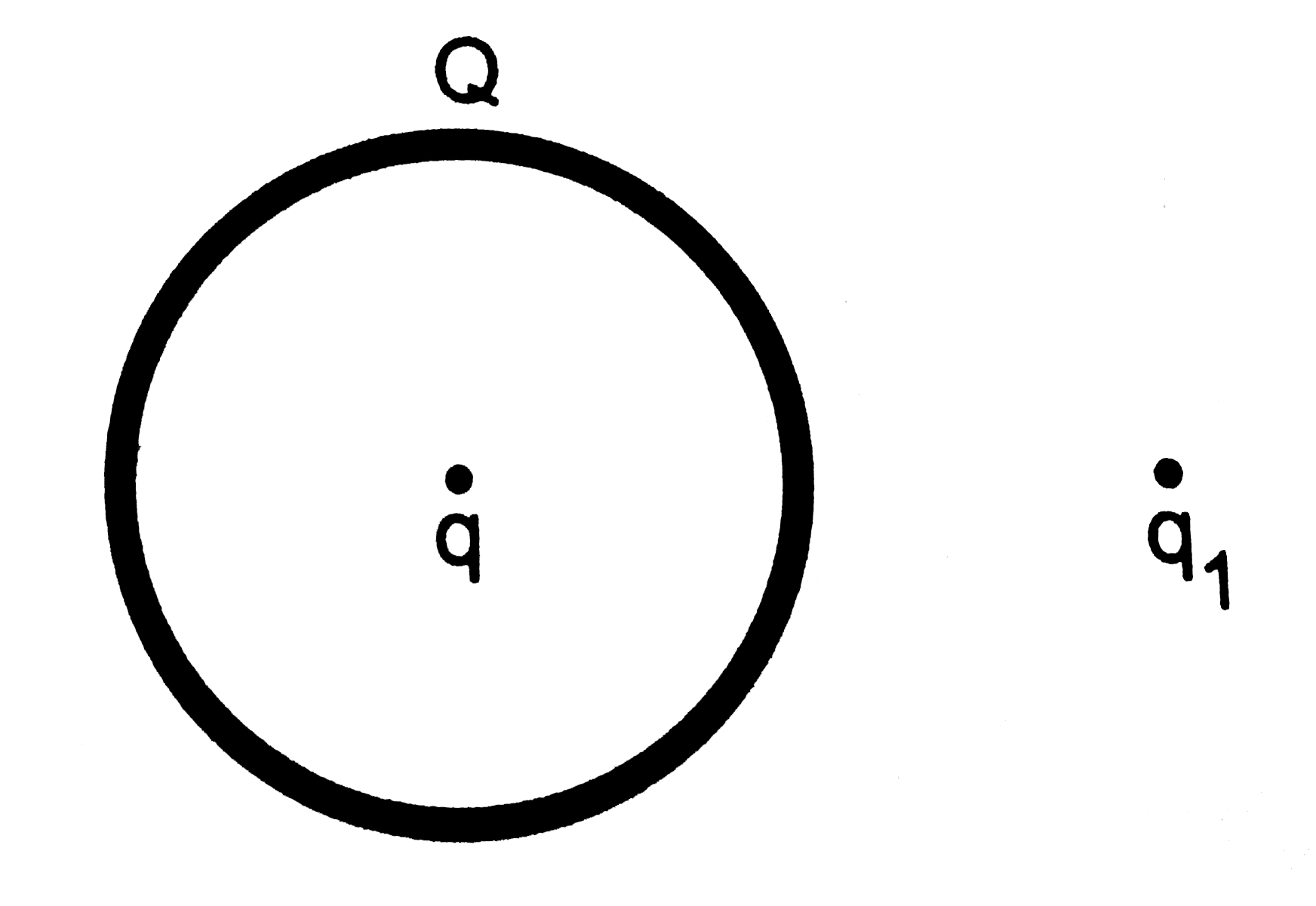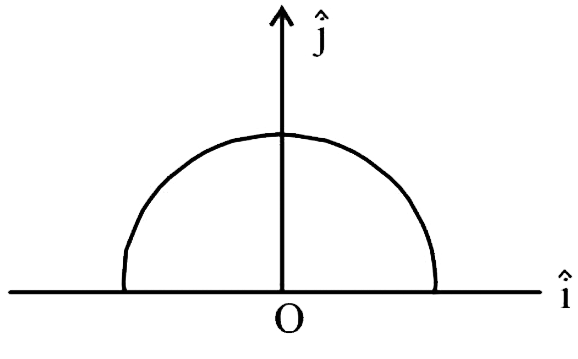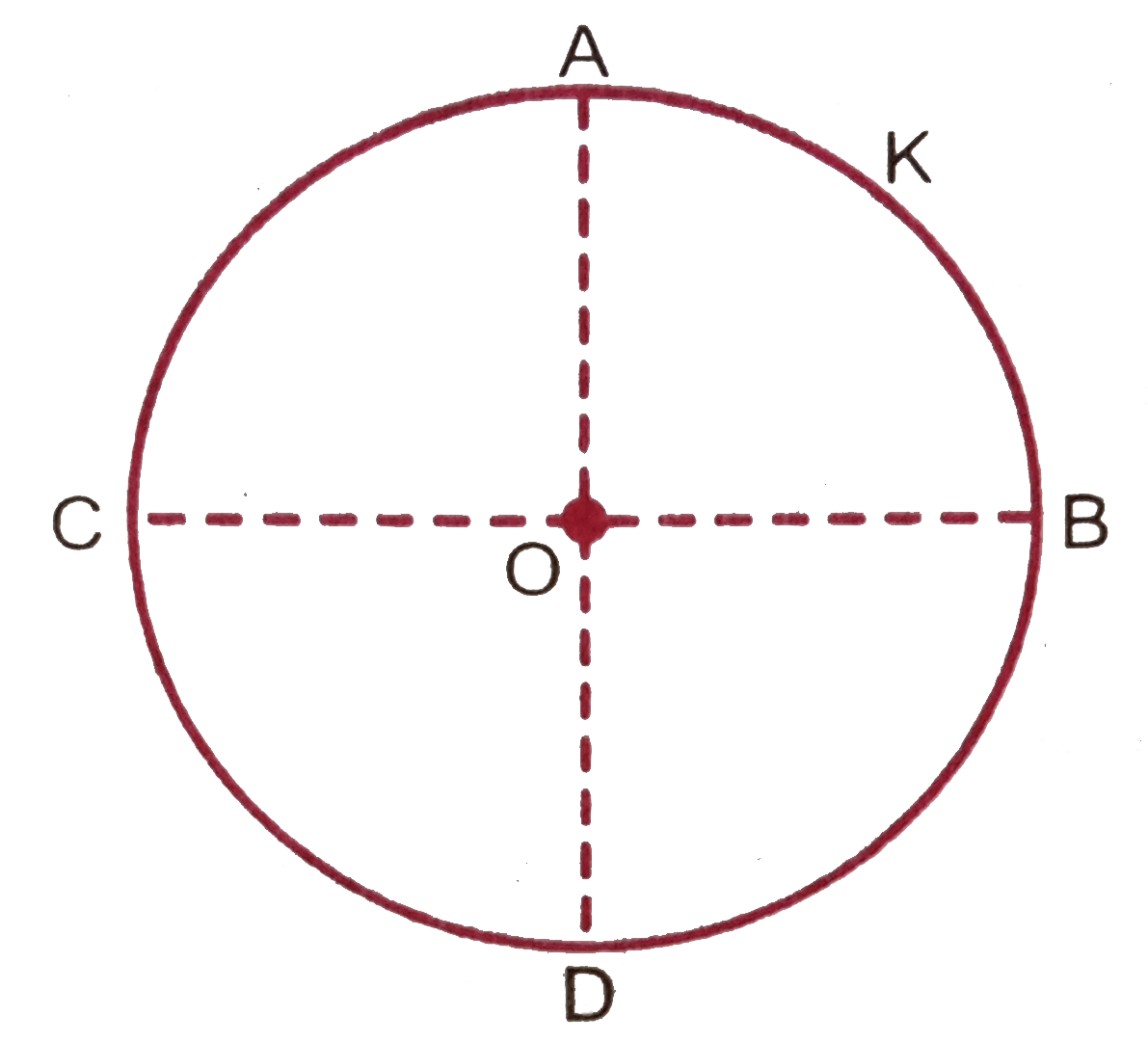A thin circular wire of radius r has a charge Q. If a point charge q is placed at the centre of the ring, then find the increase in tension in the wire.
The correct Answer is:qQ8π2∈0r2
To find the increase in tension in a thin circular wire of radius r with a charge Q when a point charge q is placed at the center of the ring, we can follow these steps:
Step 1: Define Linear Charge Density
The linear charge density λ can be defined as the total charge Q divided by the circumference of the ring.
λ=Q2πr
Step 2: Consider a Small Section of the Wire
Consider a small section dx of the wire. The tension in the wire will be affected by the repulsive force due to the point charge q at the center.
Step 3: Calculate the Force on the Small Section
Using Coulomb's law, the force F acting on the small section dx due to the point charge q can be expressed as:
F=k⋅q⋅λ⋅dxr2
where k is Coulomb's constant.
Step 4: Resolve Tension Components
The tension T in the wire acts tangentially to the circular wire. If we denote the angle subtended by the small section dx as θ, we can resolve the tension into components. The vertical components of tension from two adjacent sections will balance the force F:
F=2Tsin(θ2)
Step 5: Approximate for Small Angles
For small angles, we can use the approximation sin(θ2)≈θ2. Thus, we can rewrite the force balance as:
F=T⋅θ
Step 6: Relate Arc Length to Angle
The arc length dx can be expressed in terms of the angle θ:
dx=r⋅θ
Step 7: Substitute and Solve for Tension
Substituting dx into the expression for force:
F=k⋅q⋅λ⋅r⋅θr2=k⋅q⋅λ⋅θr
Setting the two expressions for F equal gives:
T⋅θ=k⋅q⋅λ⋅θr
Cancelling θ (assuming θ≠0):
T=k⋅q⋅λr
Step 8: Substitute for λ
Substituting λ=Q2πr:
T=k⋅q⋅Q2πrr=k⋅q⋅Q2πr2
Step 9: Final Expression for Tension
Using k=14πϵ0:
T=q⋅Q8π2ϵ0r2
Thus, the increase in tension in the wire due to the point charge q at the center is:
ΔT=q⋅Q8π2ϵ0r2
The linear charge density λ can be defined as the total charge Q divided by the circumference of the ring.
λ=Q2πr
Consider a small section dx of the wire. The tension in the wire will be affected by the repulsive force due to the point charge q at the center.
Using Coulomb's law, the force F acting on the small section dx due to the point charge q can be expressed as:
F=k⋅q⋅λ⋅dxr2
where k is Coulomb's constant.
The tension T in the wire acts tangentially to the circular wire. If we denote the angle subtended by the small section dx as θ, we can resolve the tension into components. The vertical components of tension from two adjacent sections will balance the force F:
F=2Tsin(θ2)
For small angles, we can use the approximation sin(θ2)≈θ2. Thus, we can rewrite the force balance as:
F=T⋅θ
The arc length dx can be expressed in terms of the angle θ:
dx=r⋅θ
Substituting dx into the expression for force:
F=k⋅q⋅λ⋅r⋅θr2=k⋅q⋅λ⋅θr
Setting the two expressions for F equal gives:
T⋅θ=k⋅q⋅λ⋅θr
Cancelling θ (assuming θ≠0):
T=k⋅q⋅λr
Substituting λ=Q2πr:
T=k⋅q⋅Q2πrr=k⋅q⋅Q2πr2
Using k=14πϵ0:
T=q⋅Q8π2ϵ0r2
ΔT=q⋅Q8π2ϵ0r2
Topper's Solved these Questions
- MISCELLANEOUSBOOK - ALLENCHAPTER - MISCELLANEOUSEXERCISE - Exersice-04[B]
16 Videos
- MISCELLANEOUSBOOK - ALLENCHAPTER - MISCELLANEOUSEXERCISE - Exercise-05(A)
35 Videos
- MISCELLANEOUSBOOK - ALLENCHAPTER - MISCELLANEOUSEXERCISE - Comprehension 9
2 Videos
- KINEMATICS (MOTION ALONG A STRAIGHT LINE AND MOTION IN A PLANE)BOOK - ALLENCHAPTER - KINEMATICS (MOTION ALONG A STRAIGHT LINE AND MOTION IN A PLANE)EXERCISE - BEGINNER S BOX-7
8 Videos
- PHYSICAL WORLD, UNITS AND DIMENSIONS & ERRORS IN MEASUREMENT BOOK - ALLENCHAPTER - PHYSICAL WORLD, UNITS AND DIMENSIONS & ERRORS IN MEASUREMENT EXERCISE - EXERCISE-IV
8 Videos
Similar Questions
A thin spherical conducting shell of radius R has a charge q. Another charge Q is placed at the centre of the shell. The electrostatic potential at a point P a distance R2 from the centre of the shell is
View SolutionA thin spherical conducting shell of radius R has a charge q. Another charge Q is placed at the centre of the shell. The electrostatic potential at a point P a distance R/2 from the centre of the shell is
View SolutionA thin metallic spherical shell contains a charge Q on it. A point charge q is placed at the center of the shell and another charge q1 is placed outside it as shown in the figure. All the three charges are positive. Find the force on the charge

a. at centre due to all charges.
b. at center due to shell.
View SolutionA thin. Metallic spherical shell contains charge Q on it. A point charge q is placed at the centre of the shell and another charge q1 is placed outside it as shown in figure . All the three charges are positive. The force on the charge at the centre is

View SolutionA conducting shell of radius R carries charge −Q. A point charge +Q is placed at the centre. The electric field E varies with distance r (from the centre of the shell) as
View SolutionA conducting shell of radius R carries charge–Q. A point charge +Q is placed at the centre of shell. The electric field E varies with distance r (from the centre of the shell) as :
View SolutionA thin metallic spherical shell carries a charge Q on it. A point charge Q1 is placed at the centre of the shell and another charge q is placed outside as shown in figure ahead. All the charges are positive . Discuss the various forces acting on Q1.

View SolutionA thin semi-circular ring of radius r has a positive charge q distributed uniformly over it. The net field →E at the centre O is

View SolutionA ring of radius R carries a uniformly distributed charge +Q. A point charge −q is placed on the axis of the ring at a distance 2R from the centre of the ring and released from rest. The particle executes a simple harmonic motion along the axis of the ring. State True or False.
View SolutionA thin conducting ring of radius R is given a charge +Q, Fig. The electric field at the center O of the ring due to the charge on the part AKB of the ring is E. The electric field at the center due to the charge on part ACDB of the ring is

View Solution